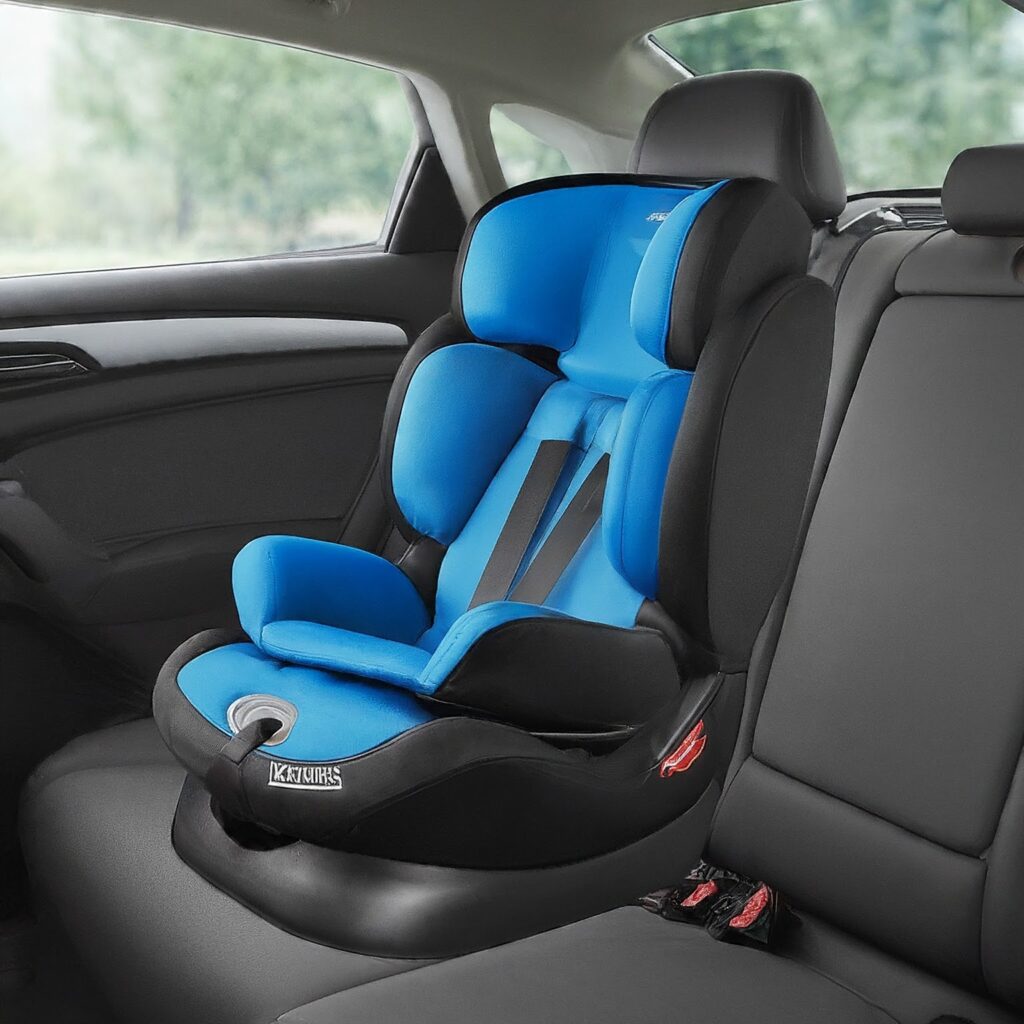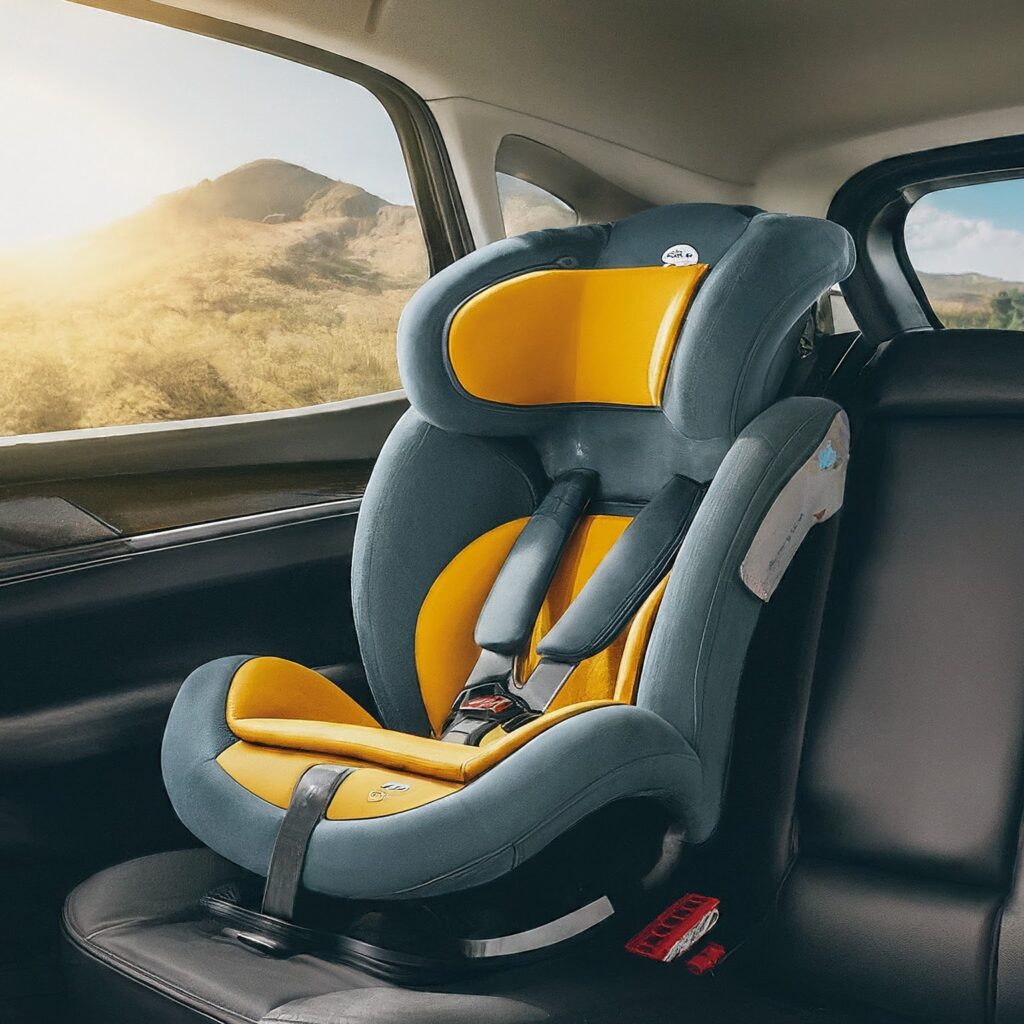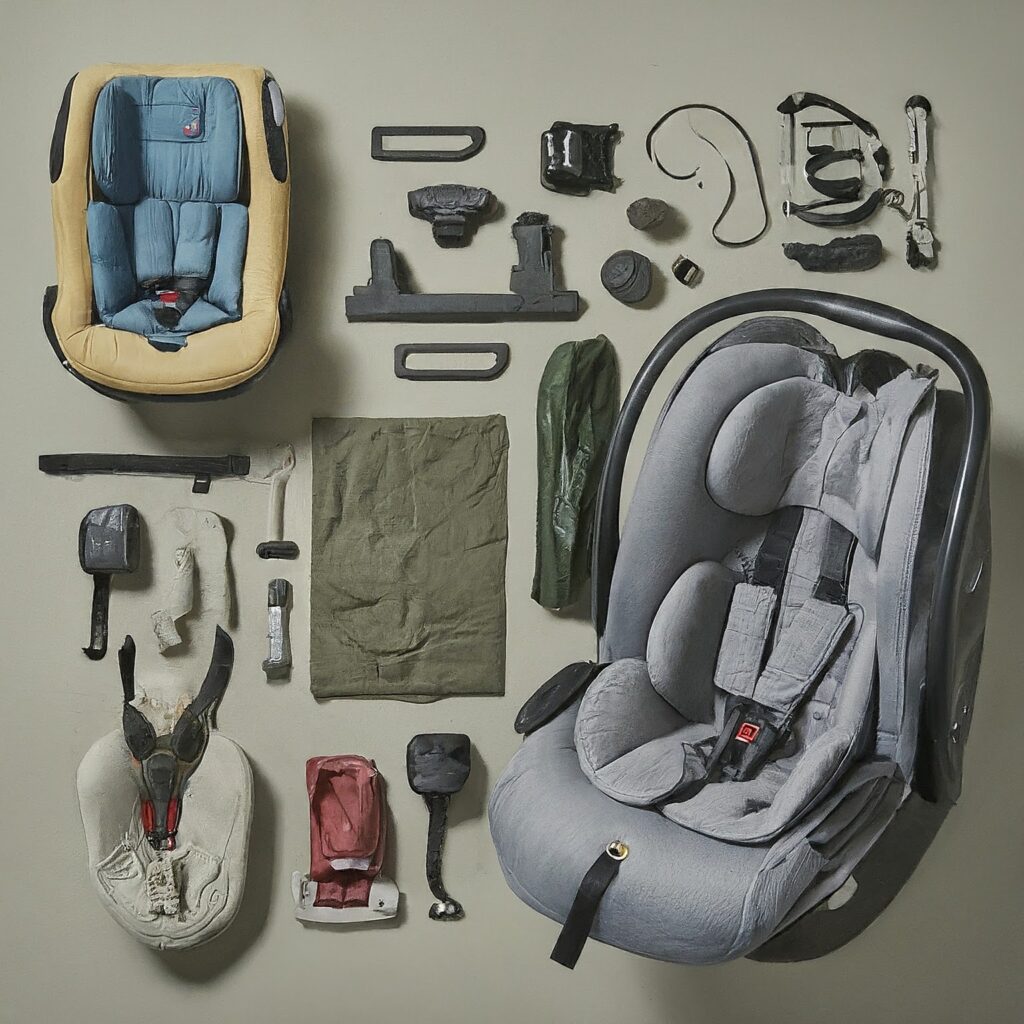Are Convertible Car Seats Safe For Your Baby?

Absolutely! Convertible car seats are just as safe as infant-only car seats when used correctly. They meet the same rigorous safety standards and can even offer some advantages. But navigating car seat options can be overwhelming for new parents. This comprehensive guide will answer all your questions about convertible car seats, including safety features, benefits, and what to look for when buying one. We’ll explore how convertible car seats can keep your precious cargo safe from infancy to toddlerhood, ensuring you make the best choice for your little one’s travel needs. Let’s delve into the world of convertible car seats and find the perfect fit for your growing family.
What are convertible car seats?
Convertible car seats are the ultimate all-in-one car safety solution for your little one. Unlike infant car seats that are limited to newborns and smaller babies, convertibles adapt to your child’s growth, offering two main positions:
- Rear-facing: This is the safest position for travel, and convertible car seats typically allow rear-facing for a longer period compared to infant seats. Experts recommend keeping children rear-facing for at least 2 years old for optimal protection.
- Forward-facing: Once your child reaches the height and weight limits for rear-facing, the convertible seat can be switched to a forward-facing position. Some convertible car seats even convert into booster seats for older children.
Are convertible car seats safe for my child?

Absolutely! Convertible car seats, when used correctly, are just as safe as infant-only car seats. They meet the same stringent safety standards set by federal regulations. In some ways, they can even offer enhanced safety for your child:
- Extended Rear-Facing: Convertible car seats allow your child to stay rear-facing for a longer period of time. Experts highly recommend keeping children rear-facing for at least 2 years old, as it provides superior protection in a crash. Most convertible car seats have higher rear-facing weight and height limits compared to infant-only seats.
- One Seat, Multiple Stages: With a convertible car seat, you eliminate the need to purchase a separate infant car seat and then transition to a toddler seat later. This not only saves you money but also simplifies the process of keeping your child safe throughout their early years.
Here’s what to remember for safe use:
- Proper Fit: Choose a seat with weight and height limits that accommodate your child from infancy to toddlerhood.
- Correct Installation: Ensure the car seat is securely installed and anchored in your vehicle, following the instructions in the car seat manual and your vehicle’s owner’s manual.
- Proper Harness Use: Make sure your child is buckled in every ride with the harness straps snug and at the correct shoulder level.
Convertible car seats: Pros and Cons
Convertible car seats are a popular choice for parents because they offer a one-size-fits-all solution for car travel, lasting from infancy to toddlerhood. But are they the right choice for you? Let’s weigh the pros and cons to help you decide.
- Cost-effective: A single convertible car seat can last for several years, eliminating the need to buy separate infant and toddler seats. This saves you money in the long run.
- Safety first: convertible car seats prioritize rear-facing travel, which is the safest way for young children. They typically have higher rear-facing weight and height limits compared to infant-only seats, allowing your child to stay rear-facing for a longer period of time (ideally at least 2 years old) for optimal protection.
- Convenience: The convertible design allows for easy adjustment as your child grows. You won’t need to uninstall and reinstall a new seat every time they reach a new stage.
- Long-lasting: Some convertible car seats even convert into booster seats for older children, further extending their usefulness.
- Peace of Mind for Parents: Knowing your child is safe and secure on every ride provides immeasurable peace of mind. Convertible car seats offer this reassurance by meeting the same rigorous safety standards as infant-only car seats. Their adaptability and focus on rear-facing travel contribute to a safer travel experience for your little one.
- Choosing the Right Convertible Car Seat: With so many advantages, it’s easy to see why convertible car seats are a popular choice. However, it’s important to select a seat that fits your car and your child’s needs comfortably. Consider factors like weight and height limits, ease of installation, and comfort features before making your decision.
Cons
- Bulkier and heavier: Convertible car seats are generally larger and heavier than infant-only seats. This can make them more difficult to install and transfer between vehicles.
- Not as portable: They typically lack the carrying handles and lightweight design of infant car seats, making them less convenient for carrying around or using with travel systems.
- May not be ideal for newborns: While some convertible car seats come with infant inserts, they might not provide the snug, supportive fit ideal for smaller babies compared to dedicated infant car seats.
What to look for when buying a Convertible car seat

Here are some key factors to consider when purchasing a convertible car seat to ensure your child’s safety and comfort:
Safety
- Safety Certifications: Look for a car seat that has been certified by the National Highway Traffic Safety Administration (NHTSA) and meets all federal safety standards. You can find this information in the car seat’s manual or label.
- Weight and Height Limits: Choose a convertible car seat with weight and height limits that will accommodate your child from infancy to toddlerhood. This will ensure you can keep your child rear-facing for as long as possible (ideally at least 2 years old) and safely transition them to forward-facing when they outgrow the rear-facing limits.
- Harness System: A 5-point harness system is the most common and safest type of harness for car seats. It consists of two shoulder straps, two lap straps, and a buckled crotch strap. Make sure the harness straps are easy to adjust and fit snugly over your child’s shoulders.
- Side Impact Protection: Look for a car seat with side impact protection features, such as head wings or energy-absorbing foam panels. These features can help protect your child in a side-impact crash.
Ease of Use
- Installation: Consider how easy the car seat is to install and uninstall in your vehicle. Some car seats have features like LATCH connectors or self-tightening straps that can make installation easier. Be sure to consult both the car seat manual and your vehicle’s owner’s manual for specific installation instructions.
- Harness Adjustment: The harness straps should be easy to adjust to fit your child securely. Look for a car seat with a no-rethread harness system, which allows you to adjust the straps without having to remove them from the seat.
- Cleaning: Accidents happen, especially with little ones! Choose a car seat with a removable and machine-washable cover for easy cleaning.
Comfort
- Padding: Look for a car seat with adequate padding to keep your child comfortable on long car rides.
- Recline Options: Some convertible car seats offer multiple recline positions to help your child sleep comfortably.
- Cup Holders and Extras: While not essential for safety, some convertible car seats have additional features like cup holders and snack trays that can help keep your child entertained during car rides.
Additional Considerations
- Budget: Convertible car seats can range in price from around $100 to $300 or more. Determine your budget before you start shopping and look for a seat that offers the features you need at a price you can afford.
- Brand Reputation: Do some research on different car seat brands and read reviews from other parents before you make a purchase. Consider factors like customer service and warranty information.
Related Questions for “Are Convertible Car Seats Safe For Your Baby?
Convertible car seats offer a convenient and seemingly cost-effective solution for your child’s car safety needs, but navigating their features and use can raise questions. Let’s address some common concerns parents have about convertible car seats:
Safety:
Is a convertible car seat as safe as an infant car seat for newborns?
Absolutely! Convertible car seats meet the same rigorous safety standards as infant-only car seats. They might even provide some advantages. Most convertibles have higher rear-facing weight and height limits, allowing your child to stay rear-facing for a longer period, which is the safest position for young children (ideally at least 2 years old).
What are the weight and height limits for rear-facing in a convertible car seat?
Weight and height limits for rear-facing vary depending on the specific convertible car seat model. Always refer to the manufacturer’s instructions for your car seat. However, most convertible car seats allow rear-facing for a longer duration compared to infant car seats, offering an extended period of optimal protection.
Do convertible car seats have good side impact protection?
Many convertible car seats come equipped with side impact protection features like head wings or energy-absorbing foam panels. These features can significantly enhance your child’s safety in a side-impact crash. Look for this feature when choosing a convertible car seat.
Usability:
Are convertible car seats hard to install?
Installation difficulty can vary depending on the car seat model and your vehicle. However, many convertible car seats have features like LATCH connectors or self-tightening straps that simplify installation. Always refer to both the car seat manual and your vehicle’s owner’s manual for specific instructions. Additionally, you can find resources online or consult a certified Child Passenger Safety Technician (CPST) for assistance with installation.
How do I know if a convertible car seat fits my car?
Most convertible car seats are designed to fit a wide range of vehicles. However, it’s always a good idea to check compatibility before purchasing. You can usually find fit information on the car seat manufacturer’s website or by using their car seat checker tool.
Are convertible car seats comfortable for long car rides?
Look for a convertible car seat with adequate padding and adjustable features to ensure your child’s comfort on long journeys. Some models even offer multiple recline positions for better sleeping posture.
Comparison:
Convertible car seat vs. infant car seat: Which is right for me?
Infant car seats are ideal for newborns due to their lightweight design and carrying handle, making them convenient for errands and travel systems. However, they have lower weight and height limits and become obsolete once your baby outgrows them. Convertible car seats offer a longer lifespan, adapting to your child’s growth from infancy to toddlerhood (and sometimes even into a booster seat), making them a more cost-effective choice in the long run.
When can my baby switch to a forward-facing position in a convertible car seat?
Experts recommend keeping your child rear-facing for at least 2 years old. After that, and once they reach the forward-facing weight and height limits of your convertible car seat, you can safely transition them to a forward-facing position.
Do I need a booster seat if I have a convertible car seat?
Some convertible car seats convert into booster seats, eliminating the need for a separate purchase. However, not all convertibles have this feature. Check the model’s specifications before assuming it functions as a booster seat. If your convertible car seat doesn’t convert, you’ll likely need a booster seat once your child outgrows the harness system.
Additional Concerns:
What are the best convertible car seats on the market?
There’s no single “best” convertible car seat, as needs and preferences vary. However, researching safety ratings, user reviews, ease of use, and features like comfort and LATCH compatibility can help you narrow down your options. Consider consulting a CPST for personalized recommendations.
How long does a convertible car seat last?
The lifespan of a convertible car seat depends on the model and how well it’s cared for. Some models can last for several years, from infancy to toddlerhood and even into the booster seat stage. Always follow the manufacturer’s expiration date guidelines for safety reasons.
Can I use a convertible car seat on an airplane?
While most airlines allow convertible car seats onboard, it’s always best to check with the specific airline beforehand for their policy and any restrictions. Some airlines might require you to purchase an extra seat for the car seat.
Conclusion
Convertible car seats are a safe and cost-effective way to ensure your child’s travel safety from infancy to toddlerhood. They meet the same rigorous safety standards as infant-only seats and often offer the advantage of extended rear-facing positioning, which is the safest way for young children. While some considerations like weight limits and installation exist, convertible car seats provide a convenient and long-lasting solution for keeping your precious cargo secure on every journey.
